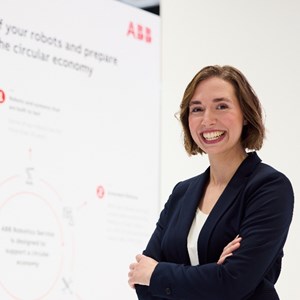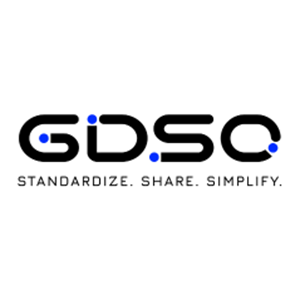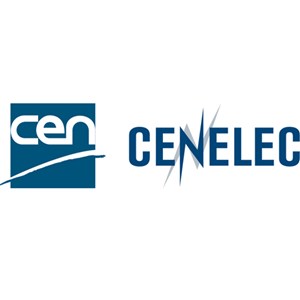Young professionals bring new energy, ideas, and skills to European standardization. As our society undergoes rapid transformations, their contributions are key to ensuring that standards remain relevant, forward-looking, and impactful.
In the context of the green and digital transitions, and as Europe strengthens its efforts to build a skilled and forward-looking workforce, we are continuing our interview series dedicated to young professionals. Through conversations with young professionals working in standardization across different sectors and countries, we will highlight their experiences, motivations, and visions for the future.
This campaign aims to shed light on the vital role of skills, collaboration, and innovation in keeping European standardization fit for tomorrow’s challenges – and on the people who are already helping to shape it.
For the fourth episode in this year’s series of interviews, we interviewed Tiphanie Bent from SNV, working as IT Governance Officer for SIX Group, on the intricacies of her work, the value of standardization, and what it is like to be a young professional in standardization.
1. Please, present yourself. How are you involved in standardization?
Thanks to a strong interdisciplinary educational background, I thrive at the intersection of technology, business and law. I am currently acting as IT Governance Officer for SIX Group – Financial Infrastructure Provider for the Swiss and Spanish markets. I am actively defending the interests of this industry within strategic working groups at CEN, CENELEC and ISO, namely, TC 68 ‘Financial Services’ and SC 42 ‘Artificial Intelligence’.
2. How did you become interested in standardization?
As IT Governance Officer, I am responsible, among others, for transposing regulations impacting IT Assets and process into Technical Requirements. Due to SIX Group international activities, we have to ensure compatibility and interoperability with the EU Market, thus we implemented the EU AI Act. When I dived into its Article 40: that is when the need for understanding the notion of European Harmonized Standards and their strong impact on market structure and AI value chains became central. I needed to enable the innovation of business on the basis of technical requirements which were not only compliant with the regulation but also drivers of quality, while reducing costs.
I met a senior standard manager in our organization who mentored me: by explaining the structure, the culture, the strategies, the diplomacy intrinsic to international standardization, he got me ready for action. This was extremely precious help to get started in this field. I believe the knowledge experts in this field remain rare, thus intergenerational transmission of knowledge is key to ensuring sustainable standardization work.
3. You are an expert in INB/NK 149/UK 42 for Artificial Intelligence in SNV. Can you explain a bit what you are working on? What topics or challenges do you focus on in AI standardization?
Based on the standardization request issued by the European Commission, a few core topics required experts’ collaboration. Yet, my personal focus has been on notions such as “domain limits” and the definition of “generality” which bear immense legal consequences. These are fascinating aspects of the technology required to enable effective AI model risk management as a part of AI Governance.
4. In your experience, how can standardization play a role in addressing the big challenge of the AI revolution? Why are standards important for the development of AI?
As an expert in Artificial Intelligence representing the Financial Services Industry, I provide insights on industry and market best practices and share our needs for standardization (e.g. what are the industry pain points and opportunities). In my role as IT Governance Officer, I am close enough to the “ground reality” of engineers, risk or compliance officers and business leads in the organization, thus I can efficiently align my actions with the organization’s strategic goals by sourcing and propagating knowledge; I am acting as a network key.
In the context of the EU AI Act, European harmonized standards have a special value due to their impact in terms of presumption of conformity. So, my role as industry representative focuses on ensuring that the standards are practical and that the cost and risk distribution reflecting the obligations split across the value chain is both fair and grounded in technical indisputable facts. This is essential to ensure that the European market can benefit from excellent quality and safety when it comes to AI embedded products or services.
Indeed, I believe that standards are key to ensure interoperability and thus ensure the scalability of technologies as their implementation bears the potential to lead to systemic cost reduction whilst increasing the output value for the individual. If carefully crafted, standards have the potential to stimulate competition and growth on the European market by creating trust.
5. More generally, in the current geopolitical context, competition on AI is increasing. How do you view Europe's role in the global AI landscape? What are its strengths and where could it improve?
Do you know the saying “importing technology is importing culture”? I find it very applicable when it comes to this specific family of models that is Large Language Models, indeed these reflect specific cultural contexts and concepts. Since Europe seems attached to the notion of technological independence (regulations such as DORA seem to show an acceleration of the effective implementation of this notion), harmonized standards for AI might lead to the formation of a coherent and competitive alignment.
As Europe started developing standards in parallel to ISO to ensure interoperability with other markets, the circle of stakeholders involved in standardization grew rapidly, and with it, the challenge of finding “consensus”. A fascinating part of the standardization work is at the interpretation level: how do we all as nations align on the mapping across indisputable technical facts and higher-level objectives? Experts mandated by European companies usually reflect European values and thus promote a European vision of the technology: this is a strength of CEN and CENELEC. However, in this context, the role of the chair and convenors of the working group is key. That is where I observe that the representation of some key industries is often missing to provide a truly complete picture and appropriate defence of interests reflecting those of the EU market.
Additionally, I observe that some European countries appear to lack awareness on the impact and value of standards. Or so I suppose because those countries barely send any experts and representatives to the working group and, worse, those that are sent are often not very representative of that country’s industrial mix. For instance, it can happen that foreign interests are represented within some national bodies in a stronger way than it would be ideal: maybe this should be balanced with a stronger representation of national and trans-European interests?
6. In your experience, what is the real value of the European standardization system – particularly when it comes to emerging technologies like AI?
In times of uncertainty, be it because of changes on the political scene or, in the case of AI, the fast pace of technological evolution, standards have a powerful role in structuring markets. Hence, Europe can gain considerable advantage by crafting practical and fair standards for all players acting on its markets: this makes a market attractive to investment and brings confidence to both internal and external players. Indeed, standards can help to reduce the amount of potential diverging interpretations of regulatory requirements, which means considerable risk reduction (at least from a legal risk point of view) paired with an efficiency gain.
Harmonized European Standards in particular provide opportunities in the area of certification because once a standard is created, AI stakeholders can be certified against it. This contributes to transparency and trust creation. By essence, standards create a shared concept, a common language that is a powerful driver for union. Standards are good for competition because they create higher common ground (benefiting the end customer by creating a minimal acceptable value) whilst players can use it as a starting point to diversifying and focusing on creative and smart solutions.
7. In your opinion, what can CEN and CENELEC as ESOs do to improve the participation of young people, especially young women, in standardization?
In my experience, gender equality is fully implemented at CEN and CENELEC; I never once felt any difference as a woman in general. I also never felt like my age would create any sort of discrimination, quite the contrary: fellow experts and standardization colleagues were very welcoming and excited to get “young blood”.
However, the awareness of young people about standardization must be improved: for example, universities and, in particular, technical universities with a European curriculum should all have a module to teach future professionals about standardization. Similarly, law universities could teach more about the relationship between regulation and standards. Maybe awareness raising could start from the high-school level as part of civic education; it is a matter of effective democracy in my view.
8. What advice would you like to give to your fellow young professionals to invite them into the world of standardization?
I think it is important to be aware of the market impact of standards and the interests at play: you cannot be too naïve. If you are not working for the industry, this might seem secondary to you, for example, I often notice a lack of awareness from academic colleagues, and yet, you need to understand that what you create affects millions of people via hundreds of thousands of small and medium-sized businesses, as well as bigger ones. Namely, participating in standardization is an honour which comes with great responsibilities.
On the practical side, I would also recommend getting familiar with the CEN and CENELEC governance and processes as soon as possible. Additionally, make sure to attend meetings in person to effectively create bonds with fellow experts and later facilitate virtual work. Finally, you must have a clear mind of what you represent and where the red lines not to be crossed are. You must act with the highest moral integrity and not let yourself be corrupted or intimidated because your purpose is bigger than yourself: technical standards will affect the entire market, and EU citizens’ quality of life, as well as future generations. So, you must focus and serve that purpose with tenacity.
This article is part of our special series dedicated to the Young Professionals in European Standardization: through a series of articles and interviews with standardization professionals, experts and business leaders coming from a variety of backgrounds, we will explore the interaction between innovation, skills and standardization in some of the most relevant sectors for Europe’s long-term competitiveness. You can read the other articles related to the campaign here.




